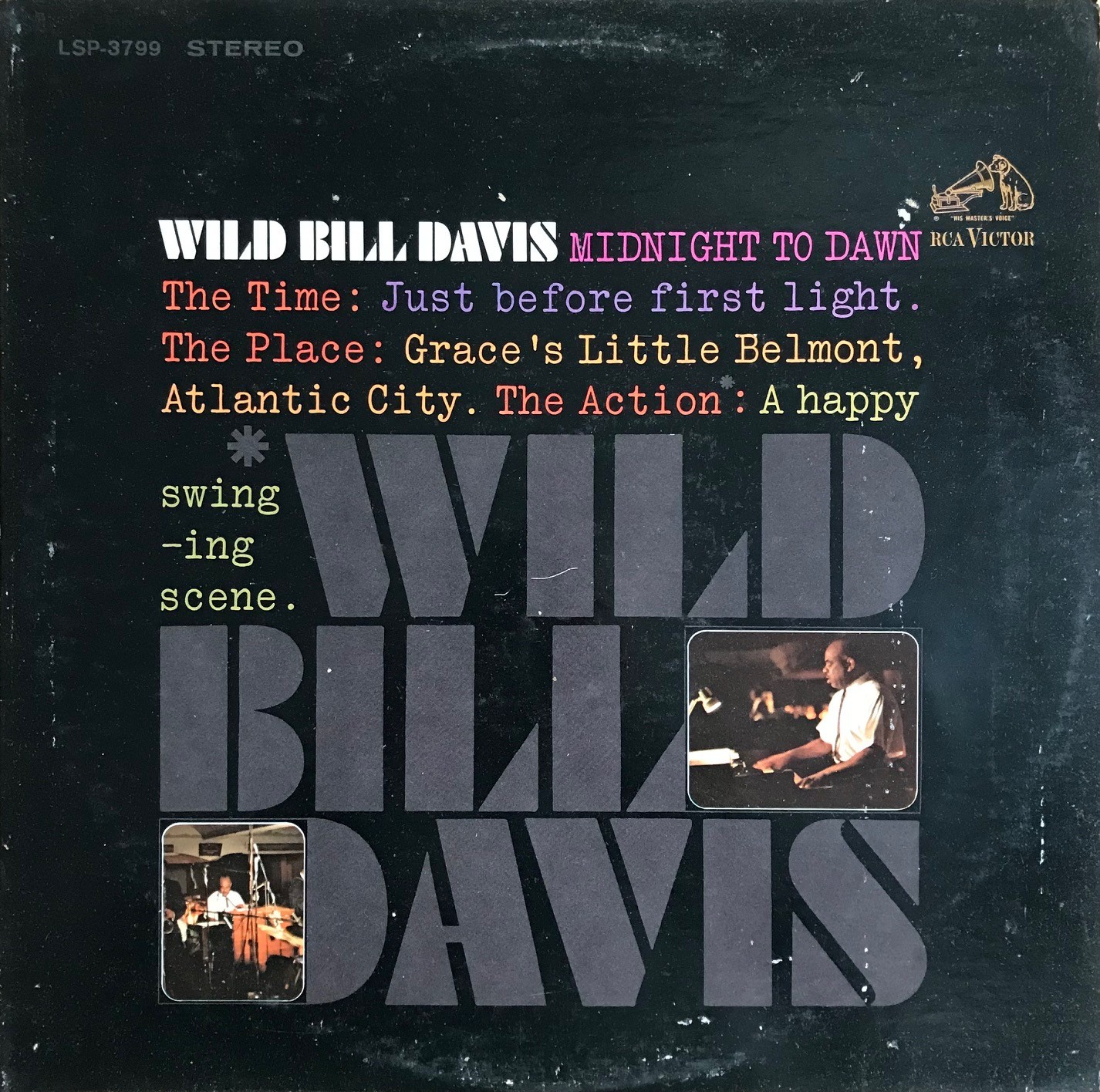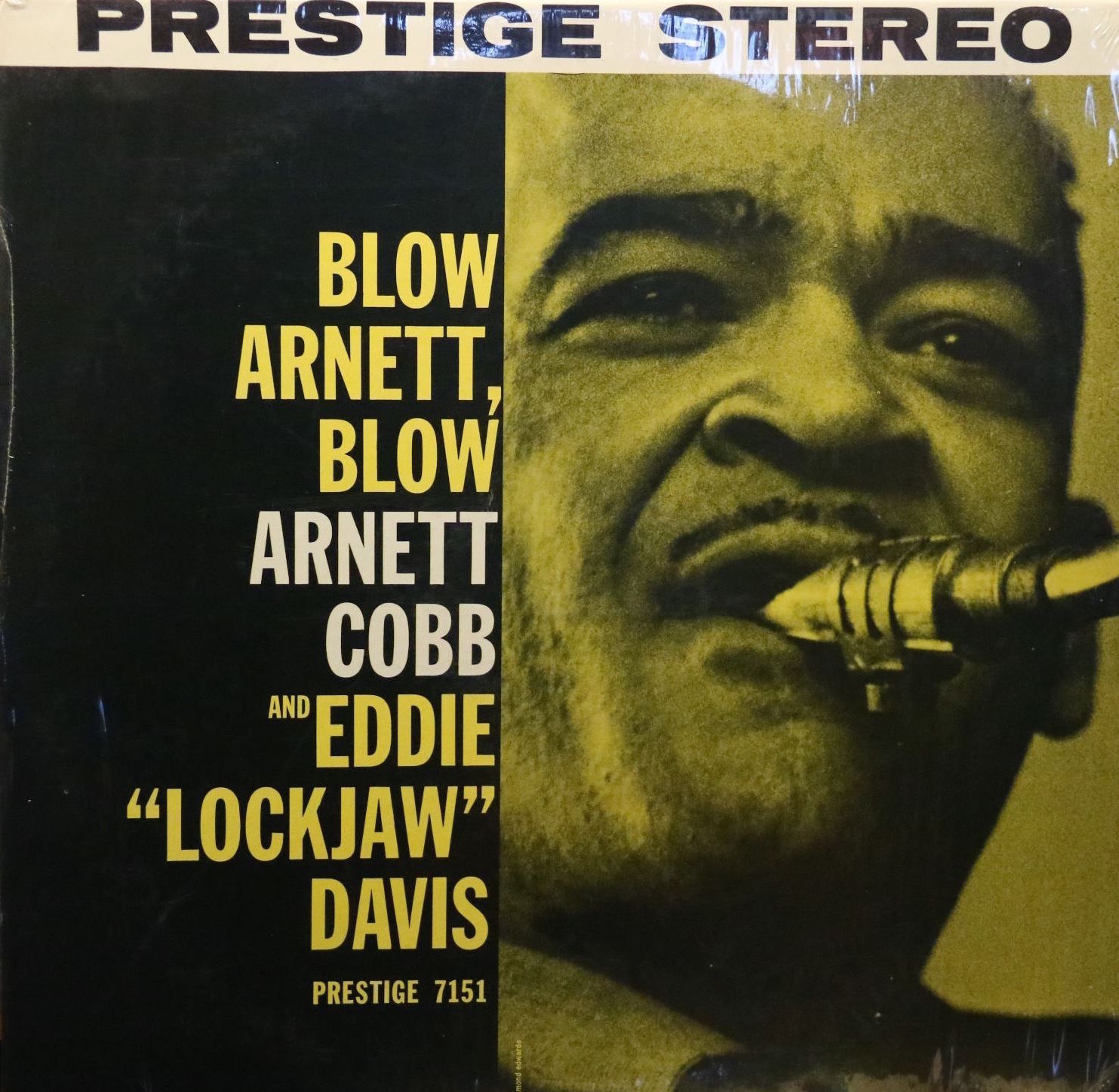Wild Bill, already seated behind the Hammond organ for approximately 25 years by 1967, is in top form.

Personnel
Wild Bill Davis (organ), Clayton Robert Brown (tenor saxophone), Dickie Thompson (guitar), Bobby Durham (drums)
Recorded
in 1967 at Grace’s Little Belmont, Atlantic City
Released
as RCA-3799 in 1967
Track listing
Side A: Let It Be / Soft Winds / Adoration / Little Tracy / Up Top / Side B: Manha De Carnaval / Cute / Summertime / Jive Samba / Straight No Chaser / Closing Theme: April In Paris
Make that three. Settling on the East Coast in the early 1950’s, Davis focused exclusively on the organ. Coming out of the swing era, Davis approached the organ as a big ensemble. He used wide dynamic ranges, continually changing sound registrations and broad and layered harmonies which were directly derived from the five-part Kansas City saxophone sections. Ultimately, his trademark features as long suspended notes and the heavy vibration of the Leslie speaker would be picked up by the modernists, led by front-runner Jimmy Smith. Davis played the bass pedals with his left foot, which obviated the need for the service of the upright bass player. All this amounted to the invention of the organ trio format: organ, guitar and drums. It was subject to variation, duo, (added) saxophone, but the crux was a non-solo, bass-less, interactive group.
His classic group consisted of guitarist Floyd Smith (preceded shortly by Bill Jennings) and drummer Christopher Colombus, also a Louis Jordan-alumnus. Davis recorded singles on Okeh in the early 1950’s and his first long-playing records on Epic in the mid-fifties. The best-known is At Birdland, a live album at the famed ‘jazz corner of the world’ in New York City and a summary of the Davis aesthetic up to that point. A popular performer and recording artist, Davis would record on Imperial, Everest and Verve in the 1960’s.
A number of those were live albums. Besides At Birdland, there’s Live At Count Basie’s and Wild Bill And Johnny Hodges In Atlantic City on RCA from 1966, Wild Bill And Eddie “Lockjaw” Davis Live! Volume 1 & 2 on Black & Blue from 1976 and Wild Bill Davis Super Trio: That’s All featuring Plas Johnson on Jazz Connaisseur from 1990.
Finally, there’s Midnight To Dawn from 1967, also released on RCA. Marketing-wise, releasing three live albums in a period of less than two years is unusual, unfruitful one would think, but we’re better for it. At this time, in contrast with At Birdland, which was a one-way street of mid-and up-tempo swing tunes, Davis, although somewhat a dinosaur among the young lions of organ jazz by then, had progressed into a varied performer. A performer that usually stretched out and played long arrangements, but for the sake of the LP format resorted to concise tunes. Wouldn’t mind listening to one of those trademark long gigs. Perhaps a task for the jazz detectives of the contemporary flood of archival releases.
Midnight To Dawn’s got a lot going for it. Davis kicks off with Let It Be, a stately and funky gospel tune written by Davis and tenor saxophonist Clayton Robert Brown, a sermon that has the congregation stompin’ and screamin’ down the aisle. And, at the dawn’s surly light, he ends with Monk’s Straight No Chaser, a rousing climax underpinned by Davis’s subtle accompaniment and effective lines on the bass pedals.
In between, Davis, usually building up his dynamic swing stories, occasionally igniting sassy single lines, Brown, growling like Ben Webster on tenor sax, flexibly switching to flute, Dicky Thompson, mixing greasy licks and octaves on guitar, Bobby Durham, solid on drums, together alternate good grooves like Soft Winds with a lovely ballad, Davis/Brown’s Adoration, not to mention Wynton Kelly’s lively calypso Little Tracy.
Cannonball Adderley’s Jive Samba is a gas. Davis, a fan of the Adderley’s, had recorded the Bobby Timmons-written Adderley hit This Here on Dis Heah (This Here) earlier in 1961, a good record.
Midnight To Dawn is very good and exciting, a prime example of where Wild Bill was at.
Listen to Midnight To Dawn on YouTube here: https://www.youtube.com/watch?v=v6JR24F8AQ0&list=OLAK5uy_nTzqOfwQh6laR0XLdt-55EFQo8BmXjYVM&index=2





